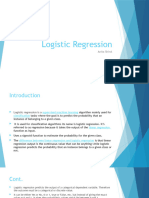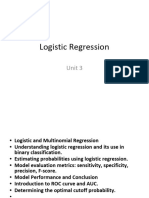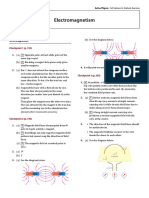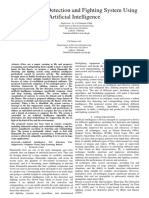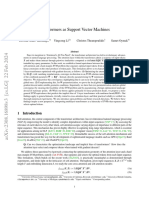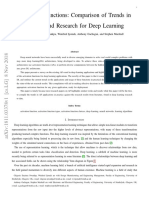0% found this document useful (0 votes)
20 views21 pagesReport Logistic Regression
Logistic regression is a statistical method used to analyze data with one or more independent variables that determine an outcome measured as dichotomous variables. It predicts the probability of a categorical dependent variable using a logistic function to transform predictions into probabilities between 0 and 1. Logistic regression is similar to linear regression but is used for classification problems with outputs of 0 or 1 rather than regression.
Uploaded by
imane bousslimeCopyright
© © All Rights Reserved
We take content rights seriously. If you suspect this is your content, claim it here.
Available Formats
Download as PDF, TXT or read online on Scribd
0% found this document useful (0 votes)
20 views21 pagesReport Logistic Regression
Logistic regression is a statistical method used to analyze data with one or more independent variables that determine an outcome measured as dichotomous variables. It predicts the probability of a categorical dependent variable using a logistic function to transform predictions into probabilities between 0 and 1. Logistic regression is similar to linear regression but is used for classification problems with outputs of 0 or 1 rather than regression.
Uploaded by
imane bousslimeCopyright
© © All Rights Reserved
We take content rights seriously. If you suspect this is your content, claim it here.
Available Formats
Download as PDF, TXT or read online on Scribd
/ 21























